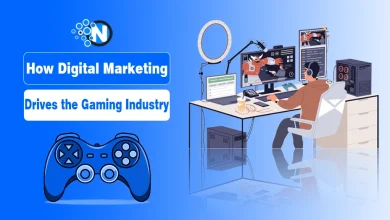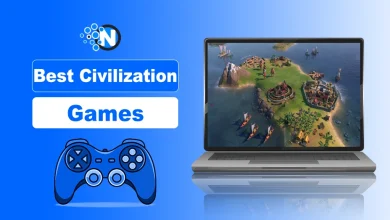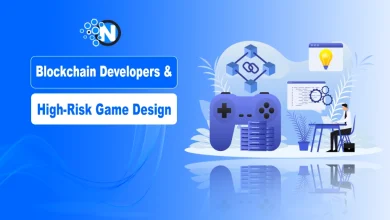What are the Invisible Technologies Powering Modern Gaming?

Have you ever stopped to think about all the technological advancements powering your late-night gaming sessions?
Modern gaming feels like magic. But behind the scenes, it’s powered by a constellation of invisible technologies that shape every pixel, decision, and interaction.
Sometimes it does seem like the tech sectors are innovating purely for the sake of it, and every week we’re told to wrap our heads around something new: cloud streaming, VR rigs, blockchain experiments, you name it. Some of these innovations genuinely move the needle, while others… well, let’s just say the jury’s out on whether they’ll even make it to the end of the decade, never mind shaping the century!
Whether you’ve got your sights on an eSports title or your style of play veers more toward mobile gaming apps and casual casino games, there are those key technologies that none of us would be able to game without. So, which ones matter most?
In this blog post, I will discuss the most important and often invisible technologies that power modern gaming for enhanced experiences.

Top 3 Invisible Technologies Powering Modern Gaming
1. Data Encryption
It may not be the flashiest technology around, but TLS encryption (formerly SSL encryption) is one of the silent heroes of modern gaming, the Batman of gaming tech. Without it, you wouldn’t even think about playing a roulette game online or saving your card details on Steam.
Transport Layer Security encryption scrambles sensitive information into unreadable code as it travels across the internet. That means all your logins, deposits, spins, and even impulsive DLC purchases are kept away from prying eyes.
This extra layer of trust has been a game-changer. It is what allows online casinos to evolve from IRCBots to cutting-edge gaming platforms. Think about it: when you’ve got the latest roulette game variant locked, loaded and ready to spin, you expect both your bankroll and your personal data to be safe. And it is, in huge part thanks to good ol’ data encryption. You can enjoy watching the digital wheel turn, secure in the knowledge that all your information is being kept safe. That ensures every session is fun and stress-free.
Indeed, it’s this kind of encryption that has helped online casinos with games like roulette thrive. Being able to save your card details safely ensures a seamless and straightforward experience whenever you log in, maximizing convenience and making it easy to enjoy the games. It’s one of the key reasons they’ve become so popular across the globe.
This doesn’t stop at iGaming, either. TLS and data encryption are built into every digital storefront you know: Xbox Live, Epic Games Store, PlayStation Network. You might not notice it when you’re chasing red 15 or queuing up the newest releases in your cart, but without TLS, online gaming as we know it wouldn’t exist.
2. Development Engines
To kick things off on the development front, let’s start with the absolute foundation of video games: gaming engines.
It doesn’t matter if you opt for Final Fantasy VII Remake over Fortnite, or prefer to get your gaming kicks from indie flicks, you’ll have seen the fingerprints of engines like Unreal or Unity all over your screen. Engines aren’t just behind-the-scenes tools; they’re what make modern games possible.
In the days before engines became widely accessible (trust us, it wasn’t all that long ago), studios had to effectively build the tech stacks from scratch. That meant smaller teams, who couldn’t access serious funding, were boxed out of the industry. Then, flexible and scalable development engines emerged, changing everything.
Yes, everything. Development times? Slashed. Barriers to entry? Smashed… The floodgates were finally opened for indie devs to compete on the same stage as blockbuster studios.
Equality of access is one thing, but engines also shape how gaming environments feel. From physics systems to dynamic lighting and audio cues, they’re the reason open worlds feel alive, and why your character animations don’t look like laughable stick figures anymore.
3. Matchmaking & Netcode Frameworks
Finally, let’s talk about the plumbing that keeps online multiplier games ticking over nicely. Without matchmaking and netcode frameworks, multiplayer gaming would still be LAN-based. They might look like the early days of Xbox Live on repeat, and none of us wants to return to those days.
Luckily, modern matchmaking algorithms have undergone quite a transformation. They automatically crunch their way through chunky data to ensure you’re paired with opponents close to your skill level. Meanwhile, netcode’s working away in the background to smooth out any latency spikes. The result? Multiplayer games that are actually playable, with a nice degree of competitive balance.
These nifty bits of software have often been called the “hidden foundation” of the gaming industry, and that’s a statement we simply can’t find fault with. It feels like we’re still not over the disappointment of Street Fighter V and its ever-notorious netcode faults. Imagine if every eSports title came complete with an expansion pack of problems!
Seriously, these systems may not be trendy, but without them, gaming might never have left the dial-up era.
Final Words: The Real Game Changers
Gaming will be an industry plagued by half-baked tech experiments, but the real game changers are the technologies that have purpose. Engines that let developers dream bigger, encryption that keeps mobile and desktop casinos secure, even procedural systems that make gaming worlds infinite; all these innovations might be invisible, but you wouldn’t be playing without them.




